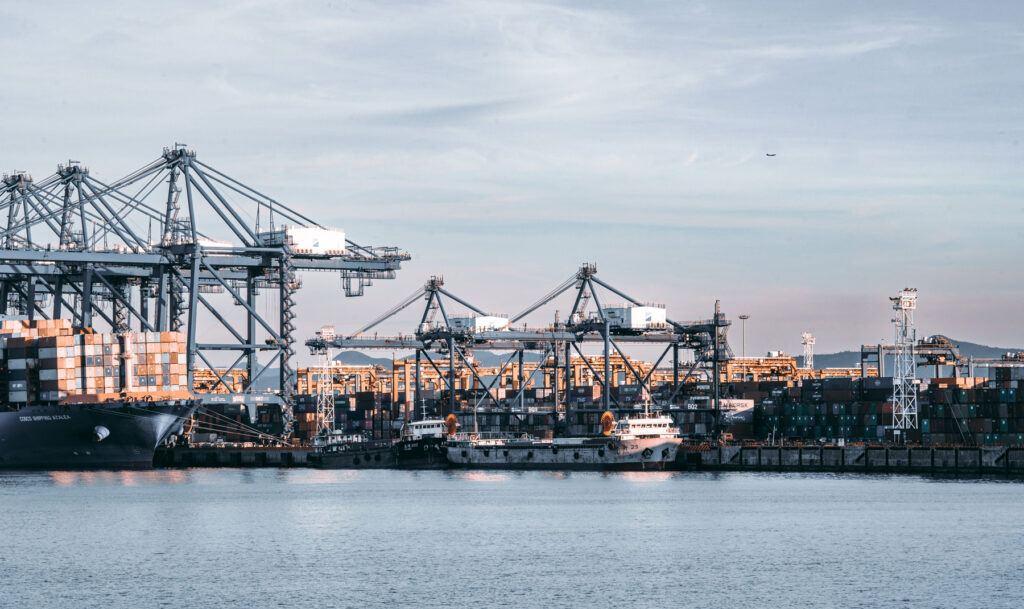On October 1, 2024, tens of thousands of dockworkers along the East and Gulf Coasts initiated a historic strike, marking the first such action in nearly five decades. Members of the International Longshoremen’s Association (ILA) walked off the job at 12:01 a.m., effectively shutting down operations at ports from Maine to Texas, including major hubs like the Port Authority of New York and New Jersey.
The strike centers on demands for higher wages and a ban on certain automated equipment that could replace human labor. The dockworkers’ employers, represented by the United States Maritime Alliance (USMX), have been unable to reach an agreement with the union despite last-minute negotiations.
The affected ports account for more than half of the nation’s container imports, handling everything from consumer electronics to raw materials crucial for manufacturing. Key ports impacted include:
Port Authority of New York and New Jersey: The third-busiest port in the United States.
Port of Savannah, Georgia: A critical gateway for agricultural and manufactured goods.
Port of Houston, Texas: A major hub for energy-related products and industrial machinery.
The roots of the strike trace back to longstanding tensions over wages and the introduction of automation in port operations. The ILA argues that while port employers have reaped significant profits—especially during the pandemic-induced trade boom—the wages of dockworkers have not kept pace with inflation.
“They want to make their billion-dollar profits at United States ports, and off the backs of American I.L.A. longshore workers, and take those earnings out of this country,” ILA President Harold Daggett told the New York Times.
Automation has been a particularly contentious issue. The union is pushing back against the implementation of technologies that could reduce the need for human labor, arguing that it threatens job security and the livelihoods of thousands of workers.
What the Sides Are Looking For
ILA’s Demands:
Wage Increases: The union is seeking a $5-per-hour raise each year over a six-year contract.
Job Security: A ban on certain automated equipment to prevent job losses.
Better Benefits: Improved pension plans and healthcare benefits.
USMX’s Position:
Moderate Wage Increases: Offers that the union deems insufficient.
Automation Implementation: The alliance wants to modernize port operations to increase efficiency.
As of now, negotiations remain at an impasse. The two sides had barely communicated for months before the strike, and recent talks have failed to bridge the gap. The White House has urged both parties to reach a fair agreement but has stated it will not intervene under the Taft-Hartley Act at this time.

Michigan’s manufacturing sector, a cornerstone of the state’s economy, is particularly vulnerable to the strike’s far-reaching ramifications that extend beyond the coastal states. Relying heavily on a complex web of supply chains that often begin at the now-affected East and Gulf Coast ports, Michigan imports over 40% of its manufacturing inputs from international sources, according to the Michigan Economic Development Corporation. Significant volumes of raw materials and components for key industries such as automotive manufacturing, aerospace, and industrial machinery arrive via these critical entry points. Automotive manufacturers depend on imported components like electronics, transmissions, and specialized steel; the aerospace sector relies on precision parts and materials from international suppliers; and industrial machinery production requires components and raw materials not readily available domestically.
With port operations suspended due to the strike, the flow of goods through these vital channels has effectively come to a halt, leading to a cascade of challenges for Michigan manufacturers. Shipments of raw materials are delayed indefinitely, causing immediate concerns over inventory shortages. Shortages of essential components force manufacturers to reduce or halt production lines, resulting in production slowdowns. Additionally, increased transportation costs become a significant issue as alternatives like air freight or rerouting shipments to West Coast ports are not only significantly more expensive but also more time-consuming. These disruptions collectively pose a serious threat to the stability and productivity of Michigan’s manufacturing industries during the strike.

Timeline of the Strike’s Impact:
Understanding the timeline is crucial for planning and mitigation:
- Week 1-2: Manufacturers rely on existing inventory and materials in transit.
- Week 3-4: Inventory levels dwindle. Production schedules are adjusted, and overtime is reduced.
- Month 2: Severe shortages lead to production halts. Layoffs and furloughs may begin.
- Beyond Month 2: Long-term contracts are jeopardized. Companies may face financial instability.
Economic Implications for Michigan Manufacturers
A prolonged strike could have dire economic consequences:
- Revenue Losses: Idle production lines mean lost sales and potential contract penalties.
- Supply Chain Reconfiguration Costs: Sourcing from new suppliers incurs additional costs and potential quality issues.
- Investor Confidence: Uncertainty may deter investment in Michigan’s manufacturing sector.
- Competitive Disadvantages: Global competitors unaffected by the strike may seize market share.
Questions About Automation and Labor Relations
The strike highlights a critical tension between technological advancement and job security—a concern not limited to dockworkers but relevant across all manufacturing sectors.
- Automation Concerns: The push for automation in ports mirrors similar trends in manufacturing, where robotics and AI are increasingly prevalent.
- Labor Relations: Proactive engagement with labor unions can prevent disputes and ensure smoother transitions when adopting new technologies.
Strategic Responses for Manufacturers
Manufacturers can take several steps to mitigate the strike’s impact:
- Assess Inventory Levels: Conduct immediate audits to determine how long operations can continue without resupply.
- Identify Alternative Suppliers: Explore options not affected by the strike, including domestic suppliers or those accessible via unaffected ports.
- Communicate with Stakeholders: Keep employees, suppliers, and customers informed about potential impacts and mitigation strategies.
- Review Contracts: Examine agreements for flexibility in delivery schedules to avoid penalties.
- Advocate for Resolution: Through industry groups like the Michigan Manufacturers Association, push for a swift resolution.
“When we talk about a two- to three-week strike, that’s when the problem starts to get exponentially worse,” said J. Bruce Chan, a transportation analyst at Stifel, in the New York Times.
Long-Term Considerations
Even after the strike ends, its effects may linger:
- Supply Chain Resilience: This event underscores the need for diversification and contingency planning.
- Labor Relations Focus: Investing in positive labor relations can mitigate future disruptions.
- Technology Adoption: Balancing automation benefits with workforce impacts is essential.
Next Steps:
The dockworkers’ strike along the East and Gulf Coasts presents significant challenges for Michigan’s manufacturing sector. Immediate action and strategic planning are crucial to navigate this complex situation. Manufacturers must assess their vulnerabilities, explore alternatives, and engage proactively with all stakeholders to mitigate risks.
At WSI Recruitment and Staffing, we are committed to providing insights and solutions to help you through these turbulent times. Our expertise in workforce solutions positions us as your partner in overcoming these challenges.


